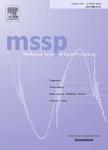版权所有:内蒙古大学图书馆 技术提供:维普资讯• 智图
内蒙古自治区呼和浩特市赛罕区大学西街235号 邮编: 010021

作者机构:Zhejiang Univ Coll Civil Engn & Architecture Hangzhou 310058 Peoples R China Zhejiang Univ Ctr Balance Architecture Hangzhou 310058 Peoples R China Zhejiang Univ Innovat Ctr Yangtze River Delta Jiaxing 314100 Peoples R China Shaoxing Univ Sch Civil Engn Shaoxing 312000 Peoples R China Shaoxing Univ Inst Artificial Intelligence Shaoxing 312000 Peoples R China Zhejiang Sci Res Inst Transport Hangzhou 310013 Peoples R China
出 版 物:《MECHANICAL SYSTEMS AND SIGNAL PROCESSING》 (机械系统与信号处理)
年 卷 期:2025年第222卷
核心收录:
基 金:National Key R & D Program of China [2023YFE0115000] Key R & D Program of Zhejiang [2023C03182] National Natural Science Foundation of China
主 题:Structural response reconstruction Conditional diffusion model Deep learning Data fusion Modal analysis Structural health monitoring
摘 要:In structural health monitoring (SHM) systems, data loss inevitably occurs and reduces the applicability of SHM techniques, such as condition assessment and damage identification. The current mainstream data-driven method, generative adversarial networks (GAN), suffers from convergence difficulty, limiting the accuracy and efficiency of response reconstruction. In this study, a conditional diffusion model with data fusion (DF-CDM) is proposed for structural dynamic response reconstruction. The original unsupervised diffusion model is improved by introducing the conditional input and modifying the deep denoising neural network to achieve supervised learning. Besides, data fusion is developed to further utilize the frequency-domain information and improve the reconstruction quality of the time-domain signals. The proposed model is validated on a three-span continuous bridge. Results show that the diffusion model with data fusion achieves the highest accuracy on the test set with R2, RMSE and MAE equaling 0.821, 0.0053 and 0.0042 respectively. Compared with the state-of-the-art GAN model, the diffusion model without the adversarial modules has a more stable training process and better reconstruction performance in both time and frequency domains. The modal identification and robustness analysis further verify the effectiveness of the proposed model. The proposed diffusion model with data fusion achieves high-quality structural response reconstruction, guaranteeing the applicability and reliability of subsequent response-based structural analysis.